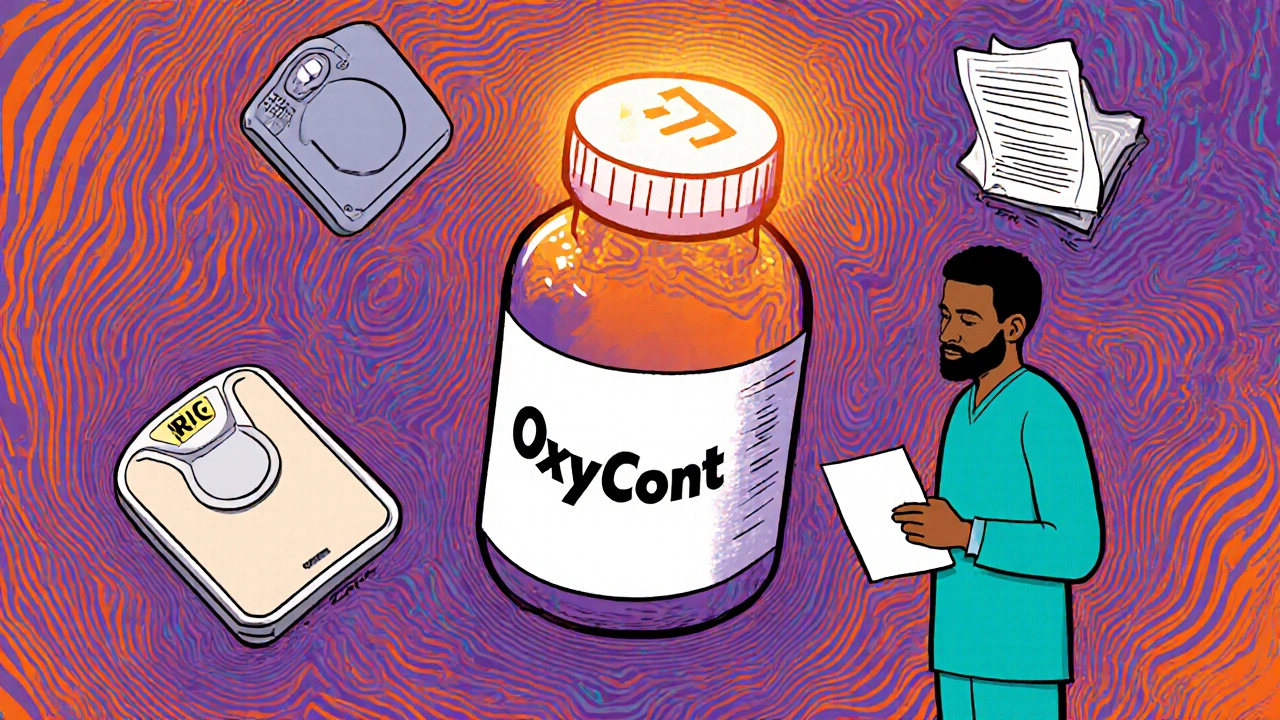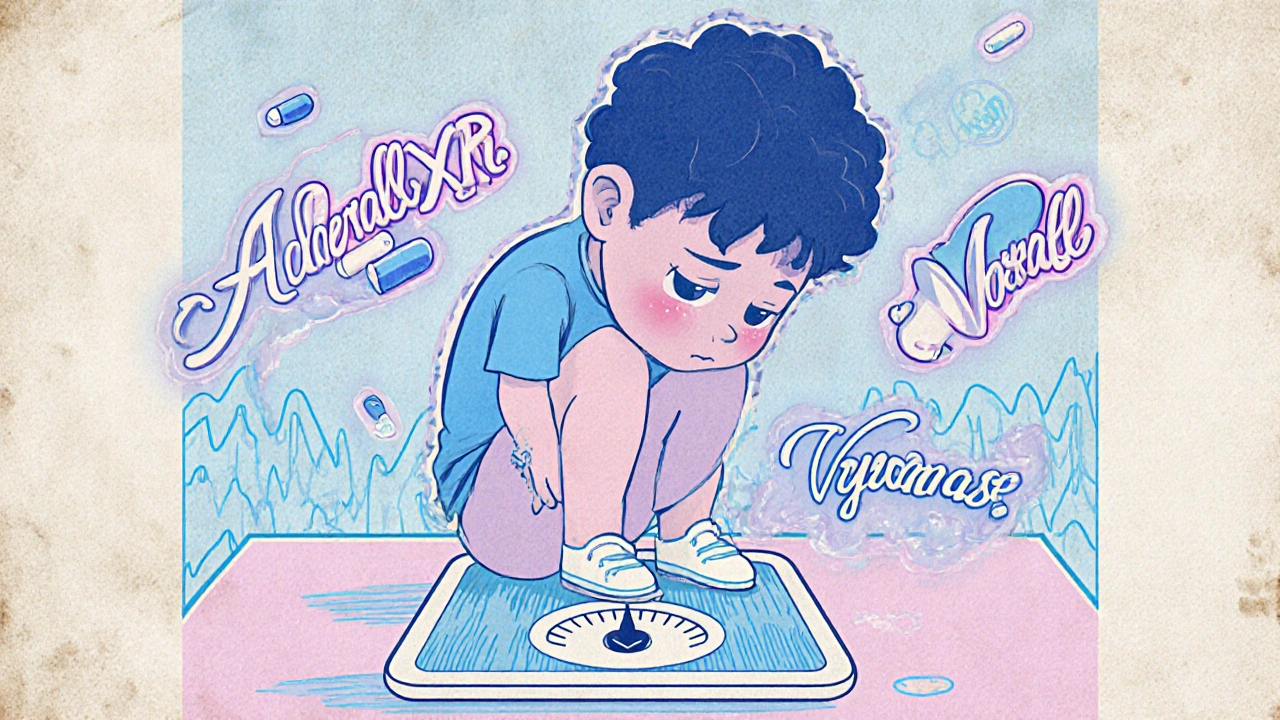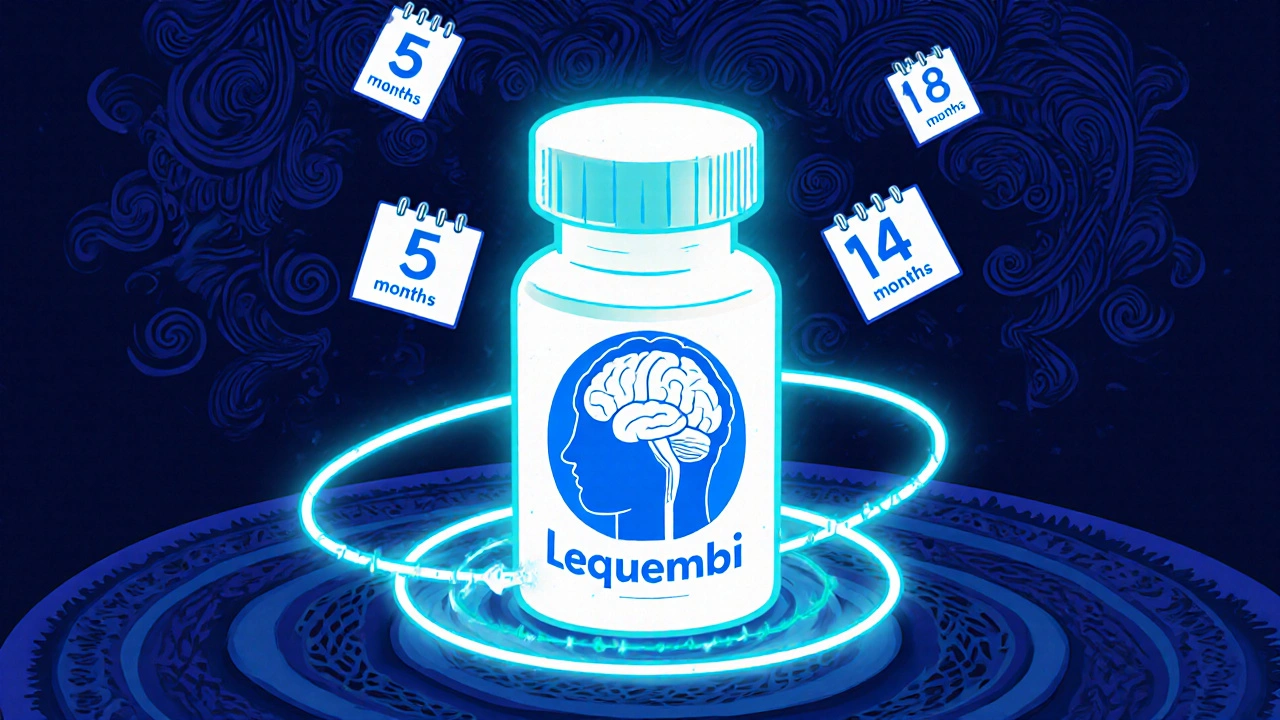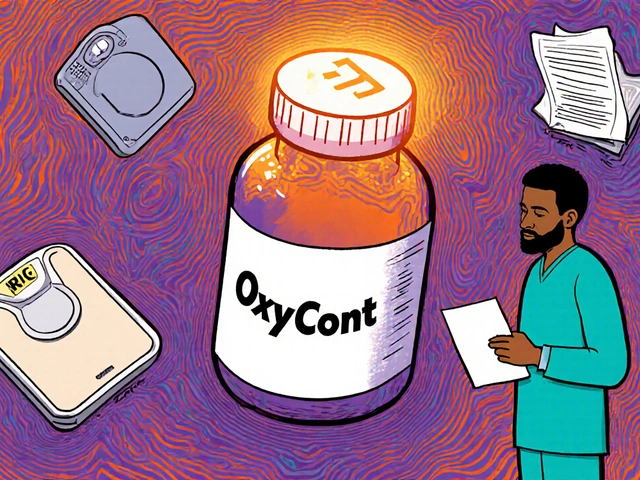
The U.S. Food and Drug Administration (FDA) issued 12 Drug Safety Communications in the first eight months of 2025 alone - more than in all of 2020. These aren’t just bureaucratic notices. They’re life-or-death updates about medications you or someone you love might be taking right now. From opioids to Alzheimer’s drugs, ADHD treatments to COVID vaccines, the FDA is acting faster and with more detail than ever before. If you’re on a prescription, you need to know what’s changed.
Why Drug Safety Communications Happen After Approval
You might think if a drug made it through clinical trials, it’s safe. That’s not true. Clinical trials involve thousands of people over months or a couple of years. Real-world use involves millions of people over decades. That’s where hidden risks show up.Take opioids. Before 2025, doctors knew they could cause addiction. But they didn’t have hard numbers. The FDA’s July 31, 2025, update changed that. Based on two massive postmarket studies, the agency now says 1 in 12 patients who take extended-release opioids for more than 90 days will develop an opioid use disorder. That’s 8.3%. For those on opioids for less than a week? Just 0.7%. That’s not a guess. It’s data from over 1.2 million patients.
These communications aren’t about panic. They’re about clarity. The FDA doesn’t pull drugs off shelves unless the risk clearly outweighs the benefit. Instead, they update labels, require new warnings, or ask doctors to monitor patients differently.
Opioid Labeling Changes: A Major Shift in Prescribing
The July 2025 opioid update affected all 46 approved extended-release and long-acting opioid pain medications in the U.S. - including OxyContin, Morphine ER, and generic versions. It’s the biggest change since the 2016 CDC guidelines.Here’s what’s new:
- Doctors must now tell patients the exact risk: 1 in 12 chance of addiction after 90+ days of use.
- New warnings about toxic leukoencephalopathy - a rare brain injury linked to opioid overdose that looks like a stroke but isn’t.
- Drug interactions now include gabapentinoids like Neurontin and Lyrica. Mixing these with opioids increases overdose risk.
- Prescribing information now requires mention of opioid-induced esophageal dysfunction, a condition that causes swallowing problems and chest pain.
Doctors aren’t being told to stop prescribing. They’re being told to have better conversations. The FDA wants you to know: if you’ve been on opioids for years without issues, you’re not automatically at risk. But if you’re just starting, or if your pain isn’t improving, it’s time to re-evaluate.
ADHD Medications and Weight Loss in Young Children
The June 30, 2025, alert targeted extended-release stimulants like Adderall XR, Vyvanse, and Concerta. It’s not about abuse or mental health. It’s about physical growth.Studies showed that children under 6 taking these medications lost an average of 1.8 pounds over 6 months - and didn’t regain it. The FDA now requires doctors to:
- Measure weight at the start of treatment.
- Check again every 3 months.
- Stop the drug if weight loss exceeds 5% of body weight.
This affects about 9.4 million U.S. children and teens on stimulants. For many, it’s not a big deal. But for a 5-year-old already struggling to gain weight, this could mean switching to a non-stimulant like Strattera or Intuniv. The FDA didn’t pull these drugs. It just added a simple, measurable safeguard.

Leqembi and Alzheimer’s: The First MRI Requirement
On August 28, 2025, the FDA issued a first-of-its-kind alert for Leqembi, the Alzheimer’s drug approved in 2023. It’s the first time the agency has required regular brain scans for a dementia medication.Why? Because 274 patients developed amyloid-related imaging abnormalities (ARIA) - brain swelling or bleeding - in the first year of use. Most were mild and didn’t cause symptoms. But some weren’t. The FDA now says:
- All patients must get an MRI before starting Leqembi.
- Another MRI is required at 5 months.
- A third is needed at 14 months.
This isn’t optional. Doctors can’t give the next infusion without the scan. It adds cost and time, but it catches problems early. For families facing Alzheimer’s, this is a trade-off: slower progress for safer treatment.
Other Key Alerts in 2025
Not every alert is about death or brain scans. Some are about everyday meds you might not suspect.
- Zyrtec and Xyzal (cetirizine and levocetirizine): The FDA added a warning about increased risk of drowsiness and impaired driving, especially in older adults. This affects 25 million users annually.
- Transderm Scōp (motion sickness patch): The FDA warned that heat above 86°F (30°C) can cause the patch to release too much medicine. Patients are told to avoid hot tubs, saunas, and prolonged sun exposure.
- mRNA vaccines (Pfizer and Moderna): The myocarditis risk for males 12-29 is now officially listed as 1,195 cases per million second doses. That’s rare - but real. The FDA now recommends spacing doses further apart for teens to reduce risk.
- Clozapine: In a rare move, the FDA removed the strict REMS program that required monthly blood tests. Why? Because data showed the risk of dangerous white blood cell drops dropped to less than 0.5% in the last five years. Fewer tests, same safety.

What You Should Do Right Now
If you’re on any prescription, don’t panic. But do check.
Here’s what to do:
- Look up your medication on the FDA’s Drug Safety Communications page. Search by brand or generic name.
- If there’s a new warning, don’t stop the drug. Call your doctor. Ask: “Does this affect me?”
- For opioids, ask: “Have I been on this longer than 90 days? Should we talk about alternatives?”
- For ADHD meds in kids under 6: “Has my child’s weight been tracked every 3 months?”
- For Leqembi or similar drugs: “When is my next MRI due?”
Don’t wait for a letter. Don’t assume your doctor knows. The FDA sends these alerts to providers, but busy clinics don’t always relay them. You’re your own best advocate.
Why This Matters Beyond Your Prescription
These changes aren’t just about individual drugs. They reflect a bigger shift in how medicine works.
Twenty years ago, drugs were approved based on short-term trials. Now, the FDA uses data from 300 million patients through its Sentinel Initiative. They’re watching for patterns in electronic health records, pharmacy claims, and patient reports. That’s why we’re seeing more alerts - not because drugs are getting riskier, but because we’re seeing risks we never could before.
Pharmaceutical companies are spending more too. The Opioid Postmarketing Consortium alone spent $187 million on the studies that led to the 2025 labeling changes. That’s not charity. It’s required by law. And it’s changing how drugs are developed.
By 2027, the FDA plans to require real-world evidence for all drugs with black box warnings - the strongest safety alerts. That means future drugs might be approved only after proving safety in real patients, not just clinical trials.
What’s Next?
The FDA’s 2026-2030 strategic plan promises to cut the time between discovering a risk and issuing a safety alert from 60-90 days down to 30 days. That’s a big deal. It means you’ll hear about problems faster.
Expect more:
- Warnings for new classes of drugs - especially gene therapies and biologics.
- More focus on long-term effects of mental health medications.
- Greater transparency about side effects in non-English languages.
The goal isn’t to scare you. It’s to give you the truth - so you can make informed choices with your doctor.
Are medication recalls common?
True recalls - where a drug is pulled from shelves - are rare. Most safety alerts are labeling updates or monitoring requirements. In 2025, only three drugs were fully recalled due to contamination or manufacturing issues. The rest were safety communications, which affect how the drug is used, not whether it’s available.
Should I stop my medication if I see a safety alert?
No. Stopping suddenly can be dangerous. For example, quitting opioids cold turkey can cause severe withdrawal. Stopping ADHD meds can trigger anxiety or depression. Always talk to your doctor first. The alert is meant to guide your next steps - not replace them.
How do I know if my drug is affected by a recent FDA alert?
Check the FDA’s Drug Safety Communications page and search by your drug’s brand or generic name. You can also ask your pharmacist - they get these alerts too. If you’re unsure, call your doctor’s office and ask if your prescription is on any recent safety list.
Do these alerts mean the drugs are unsafe?
No. These drugs still work. The alerts mean we now understand the risks better. For example, Leqembi slows Alzheimer’s progression - but only if you get regular MRIs. Opioids relieve pain - but only if you’re aware of the addiction risk. The benefit still exists. It’s just clearer now.
Why are there so many alerts now?
Because we’re watching better. The FDA now uses data from 300 million patients, not just clinical trials. They’re catching rare side effects that only show up after years of use. It’s not that drugs are riskier - it’s that we’re finally seeing the full picture.


so like... i just took oxycontin for 3 years and somehow i'm still alive? but now they say 1 in 12 people get addicted? cool. guess i was the lucky 11. 🤷♀️ also who else just Googled 'toxic leukoencephalopathy' and now has nightmares?
this is actually one of the most important posts i've read all year. i'm a nurse and i see patients ignore these alerts all the time. please, if you're on any med, check the FDA page. not because you're paranoid - because you deserve to know what you're putting in your body. 🙏
usa again with their overregulation. in india we just take pills and pray. why do u need 3 mris for a drug that maybe helps ur grandma remember ur name? waste of money. also why u so scared of pain? just endure.
I'm calling my doctor tomorrow to ask about my ADHD meds and my kid's weight. This isn't fearmongering - it's responsibility. If we don't push for transparency, who will? The pharma reps? Nah. We have to be the ones asking the hard questions. No more 'they'll tell me if it's important.'
The data is irrefutable. The FDA’s Sentinel Initiative has processed over 300 million patient records, and the statistical significance of these findings is robust. The opioid addiction rate of 8.3% after 90 days is not anecdotal - it is epidemiologically validated. Any dismissal of these alerts constitutes a failure of medical literacy.
just got my Leqembi infusion yesterday. got my first MRI next week. yeah it’s a hassle, but i’d rather be alive and slow than fast and gone. 🙏 also - anyone else notice the Zyrtec warning? i almost drove to work after taking it last week. yikes.
I’ve been on Vyvanse since I was 8 and now I’m 24 - my weight dropped 12 pounds in the first six months and never came back. I thought it was just ‘being skinny’ until I read this. I’m telling my mom to get my 5-year-old cousin’s weight tracked every three months. This isn’t just about ADHD - it’s about childhood development. And honestly, I’m mad no one told me this sooner. Why is this not common knowledge? Why are we waiting for a federal alert to care about kids’ growth?
so the FDA says dont take scopolamine patch in a sauna?? bro i just got back from hawaii and i was like... wait does this mean i cant chill in the hot tub?? 😅
The proliferation of safety communications reflects a paradigm shift in pharmacovigilance from reactive to predictive. The integration of real-world evidence into regulatory decision-making represents the maturation of evidence-based medicine. One must acknowledge the institutional integrity of the FDA despite the noise of social media.
I used to think these alerts were just bureaucracy. Then my dad had a stroke from an opioid interaction with gabapentin. He didn't even know they could mix. Don't wait for a letter. Don't assume your doctor knows. Call them. Ask. Write it down. Your life isn't a guess.
this is why america is weak. we turn every pill into a crisis. in russia they just give you the drug and say 'deal with it'. now we need mris for dementia meds? we need to stop coddling people and start being tough. if you want pain relief take it. if you get addicted? that's your fault.